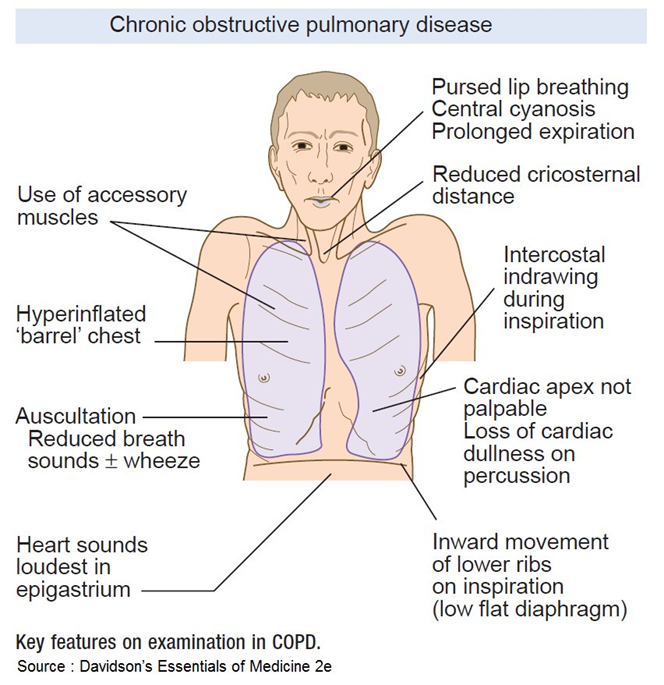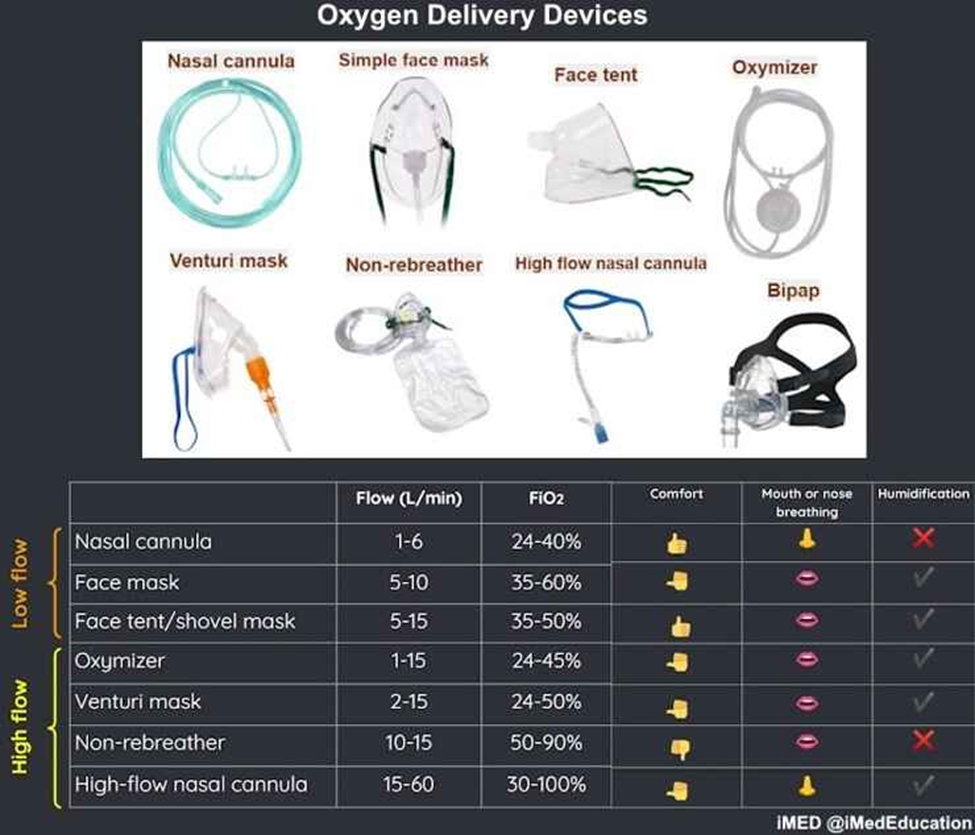An admitting nurse is assessing a client with COPD. The nurse auscultates diminished breath sounds. These findings indicated the nurse to monitor the client for what?
Kyphosis and clubbing of the fingers
Dyspnea and hypoxemia
Sepsis and pneumothorax
Bradypnea and pursed-lip breathing
The Correct Answer is C
A. Kyphosis and clubbing of the fingers:
Kyphosis refers to an excessive forward curvature of the spine, which is not directly related to diminished breath sounds. Clubbing of the fingers is often associated with chronic respiratory conditions, but it is not directly linked to the finding of diminished breath sounds.
B. Dyspnea and hypoxemia:
Dyspnea (shortness of breath) and hypoxemia (low oxygen levels in the blood) are common symptoms in COPD, but diminished breath sounds may indicate an additional concern, such as pneumothorax or other complications.
C. Sepsis and pneumothorax:
Diminished breath sounds can be a sign of pneumothorax, a condition where air accumulates in the pleural space, leading to lung collapse. Sepsis is a risk in clients with COPD due to the potential for respiratory infections. Monitoring for these complications is crucial.

D. Bradypnea and pursed-lip breathing:
Bradypnea (slow breathing) and pursed-lip breathing are coping mechanisms that individuals with COPD may use to manage their breathing difficulties. While they are relevant in the context of COPD, they are not directly associated with the finding of diminished breath sounds.
Nursing Test Bank
Naxlex Comprehensive Predictor Exams
Related Questions
Correct Answer is C
Explanation
A. Partial non-rebreathing mask:
This mask delivers higher concentrations of oxygen than a nasal cannula. It has a reservoir bag that allows the client to rebreathe some exhaled air, increasing the oxygen concentration delivered. However, it may not be necessary for a client with mild shortness of breath and slightly reduced oxygen saturation.
B. Simple (Oxy Plus) mask:
The simple mask provides a higher concentration of oxygen than a nasal cannula but lacks the reservoir bag found in the non-rebreathing mask. It is generally used for moderate oxygen needs. However, it might be more than what is required for a client with mild shortness of breath and slightly reduced oxygen saturation.
C. Nasal cannula:
Nasal cannulas are commonly used for clients with mild respiratory distress. They deliver a lower to moderate concentration of oxygen and are well-tolerated by most clients. They are suitable for individuals with mild shortness of breath and can be adjusted based on the required flow rate.
D. Non-rebreathing mask:
The non-rebreathing mask provides the highest concentration of oxygen among the options listed. It includes a reservoir bag to deliver a higher oxygen concentration. It is typically reserved for clients with higher oxygen requirements. For a client with mild shortness of breath and slightly reduced oxygen saturation, this may be more than necessary.

Correct Answer is A
Explanation
A. "The test will provide a detailed profile of the heart’s electrical activity."
This statement is inappropriate because transesophageal echocardiography (TEE) primarily provides detailed images of the heart's structure, such as the valves and chambers, rather than focusing on the heart's electrical activity. The assessment of electrical activity is typically associated with electrocardiography (ECG or EKG) rather than echocardiography.
B. "I will need to start an IV in your arm before the test."
This statement is appropriate. It is common for medical procedures, including TEE, to require an intravenous (IV) line for administration of medications or fluids during or after the procedure.
C. "Your throat may be a little sore after the exam."
This statement is appropriate. TEE involves inserting a probe through the esophagus, and it is common for patients to experience a sore throat afterward due to the presence of the probe.
D. "You will need to refrain from eating and drinking 6-8 hours before this test."
This statement is appropriate. It is standard practice to ask patients to fast for a specific period before TEE to minimize the risk of complications, such as aspiration, during the procedure.
Whether you are a student looking to ace your exams or a practicing nurse seeking to enhance your expertise , our nursing education contents will empower you with the confidence and competence to make a difference in the lives of patients and become a respected leader in the healthcare field.
Visit Naxlex, invest in your future and unlock endless possibilities with our unparalleled nursing education contents today
Report Wrong Answer on the Current Question
Do you disagree with the answer? If yes, what is your expected answer? Explain.
Kindly be descriptive with the issue you are facing.
